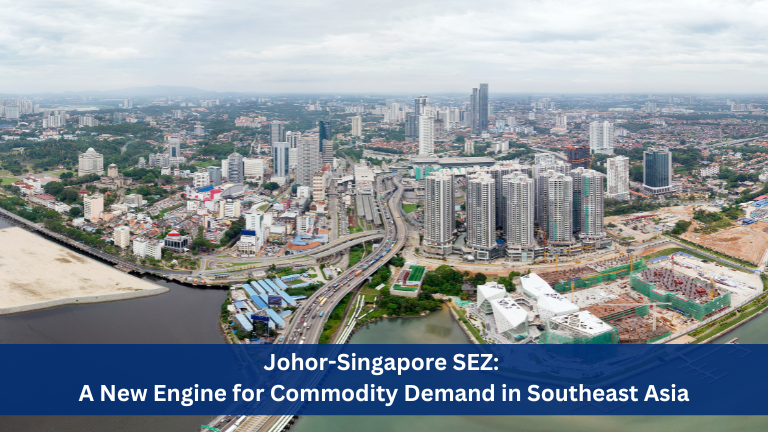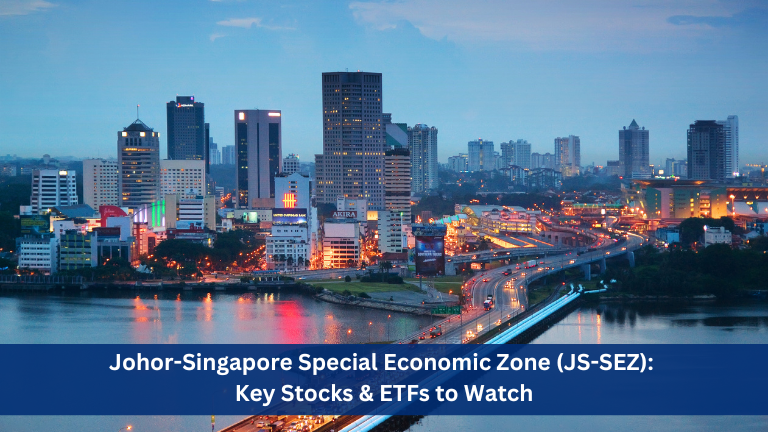By Priyanka Sachdeva, Senior Market Analyst, Phillip Nova
The surge in costs of soft commodities has triggered a buzz in the financial markets, igniting a flurry of discussions among traders and analysts alike. Commodities can continue to be daunting prospects for investors especially as weather atrocities have just started to unfold and are likely to continue to threaten the global food supplies. Soft commodity projections are factoring in reduced harvests until 2024, and if that’s not bullish for commodity prices and food inflation, then what is? Soft commodities were the second-leading sector of the raw materials asset class in the second quarter of 2023 and posted a double-digit percentage gain over the first half of this year.
When it comes to soft commodities, orange juice, the world’s favourite breakfast drink is leading the charts with a more than 59% rise in prices this year alone. The disastrous disease-dented orange harvest in Florida this year is currently estimated at a tenth of the size it was a decade ago. The global demand turned to Brazil, the second largest producer of oranges, which is failing to shoulder the shortfall in supply as they are grappling with erratic rainfall patterns due to El Nino. Concerns of citrus greening disease and El Nino weather atrocities are dwindling global supplies propelling prices from $90/lbs at the beginning of 2020 to $341/lbs this month.
Cocoa is another soaring soft commodity with almost 40% gains ytd as prices soared to record highs in August. The recent heavy rains in West Africa has accelerated the spread of black pod disease, which causes cocoa pods to turn black and rot. Reportedly over 20% of the crop in Ivory Coast and Ghana, which constitutes over 70% of global supplies is already lost to brewing disease. Production through 2024 is forecasted to be dented and has been the key driver for a rally in prices.
Following suit is sugar with over 31% ytd jump in prices as both top producers India and Brazil, are struck with adverse rainfall patterns. India allowed mills to export only 6.1 million tonnes of sugar during the current season to 30 September 2023 and is planning to ban sugar exports in the next season beginning October, halting shipments for the first time in seven years, as a lack of rain has cut cane yields. The absence of Indian supplies from the globe is expected to send shockwaves to an already crumbling world sugar markets!
Another commodity, trending up is Thai rough rice with ytd gains of over 40%. Last month, India, the world’s largest rice supplier, issued an export ban on non-basmati white rice. Despite a 20% export duty on rice applicable since last year, exports continued to rise because of geopolitical issues and extreme climate conditions in other countries. Last week, the U.N. Food and Agriculture Organisation reported that global rice prices in July were up nearly 20% from a year earlier, pushing its rice price index to the highest in 12 years. Last but not least in the bundle is Cotton with 5.29% ytd gains hovering near its recent high of 88.88 on 11th August.
Heat waves have broken records in China, wildfires have raged across southern Europe and North Africa, and July was the world’s hottest month on record. Soft commodities have long histories of extreme price moves, so following trends tends to be the optimal approach. Soft commodity prices can rise or fall to levels that sometimes defy reasonable, rational, and logical analysis, making trend-following the best trading method for the sector.
A combination of calamities, weather changes and Russia’s threats to a global basket of grains has left food supplies more vulnerable and less prepared to absorb any disruption. Investors should factor in that this is the new normal now, with more volatility and unpredictability, whether that’s in commodity prices or food prices.
Droughts in India, Indonesia, and other Asian food exporters have led to smaller harvests. Faced with consumers outraged over higher prices and growing global food insecurity, governments of many agricultural exporting countries have banned the export of critical foods, causing further disruptions. India recently restricted exports of sugar and rice and is likely to ban rice exports starting in October. The Thai government has urged farmers to curtail harvesting rice due to a lack of irrigational water.
Persistent drought has lowered water levels on key shipping routes, including the Panama Canal and the Rhine River in Europe, requiring shippers to lighten their loads or find other routes. The other factors that are pressuring prices on supermarket shelves include higher labour costs as workers try to keep pace with inflation. Food producers are finding that in an environment of rising prices, they can lift prices even higher to pad their profits.
Meanwhile, since Brazil is a leading producer of sugar, coffee, orange, and cotton, the trend in the Brazilian currency is a crucial factor for prices. A rising real causes labour and other domestic input prices to rise, putting upward pressure on prices for the majority of agricultural commodities. Rising fuel cost is also likely to add to the end price of commodities going forward. In a nutshell, soft commodities are underpinned and the risk of food inflation is heightening given the evolving global economic backdrop amid higher borrowing costs. Hence, it seems very likely that the commodity markets will continue to surprise their participants.
As we move into Q3, cocoa remains in a short-term bullish trend cocoa prices have support from concern that an El Nino weather event could undercut global cocoa production. The reopening of the global economy from the pandemic has boosted chocolate demand by almost 10% in 2023 and is currently underpinning prices. Meanwhile, as per the projection from Marex Financial on 17 August 2023 the global cocoa market in 2023/24 will be in a deficit of -279,000 MT. The expectation of a supply deficit has been compounded by weather variations, especially in West Africa, and will likely keep prices elevated.
Sugar seems consolidating after a slight correction but any concrete bans from India the top exporter, to safeguard domestic prices can drive prices. Meanwhile, Thailand is also expected to reduce shipments and major producer Brazil would alone not be able to fill the gap in global supplies. Prices might stay higher for longer mainly due to expected production difficulties in Asia and the possible ban on exports from India.
Coffee is trending lower with ytd losses of 9.12% as the forecasted dented harvest from the World’s largest producer Brazil has been better than projected. Factoring El Nino concerns, analysts presumed that wetter-than-normal weather in Brazil will delay the country’s coffee harvest completion. However, as reported by Brazil’s coffee export cooperative, Brazil’s coffee harvest was 87.3% completed as of August 18, ahead of the 85.5% completed at the same time last year.
Rice may also continue to see enough traction as production across Asia is dwindling while some relief from Wheat and Corn, due to excessive supplies will keep the grain basket neutral. Rice, palm oil, sugarcane, and coffee crops have received lower-than-usual rainfall in Southeast Asia, with Indonesia and Thailand the worst hit. Meanwhile, the ongoing escalation of war between Russia and Ukraine is stripping away the world’s grain basket.
The weather across the critical growing regions is always the most significant factor for the path of least resistance of prices. However, inflation has caused input prices to rise, putting upward pressure on sector members. Prices of soft commodities have been outperformers, surging about 24% in the first half of the year while the broader agriculture index eased 3% weighed by falling wheat and corn prices.
Trade Stocks, ETFs, Forex & Futures on Phillip Nova
Features of trading on Phillip Nova
- Gain Access to Over 20 Global Exchanges
Capture opportunities from over 200 global futures from over 20 global exchanges
- Trade Opportunities in Global Stocks
Over 11,000 Stocks and ETFs across Singapore, China, Hong Kong, Malaysia and US markets.
- Over 90 Technical Indicators
View live charts and trade with ease with over 90 technical indicators available in the Phillip Nova platform
- Trade Multiple Assets on Phillip Nova
You can trade Stocks, ETFs, Forex and Futures on a single ledger with Phillip Nova






